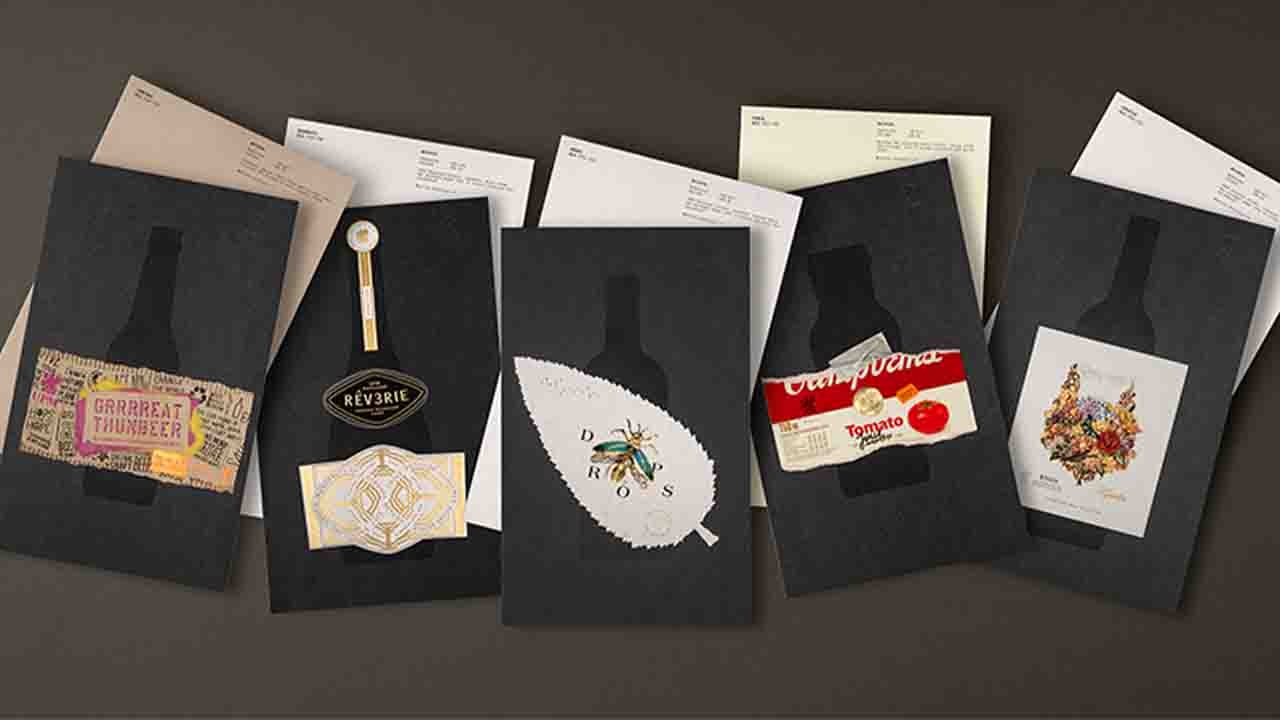UPM launches sustainable wine and spirit label materials
New collection was developed along with five leading Spanish designers and uses recycled fibers

UPM Raflatac has launched its new collection of wine, spirits and beverage label materials – Rêverie 3 – that use recycled fibers.
The new collection was developed in collaboration with five leading Spanish designers. The Rêverie 3 collection is made with materials from well-managed, FSC certified (FSC C012530) forests, recycled materials and controlled sources.
More and more brands now seeing the inclusion of FSC and PCR packaging as a necessity. With this in mind, five of the company’s responsibly sourced label materials were given to five Spanish design agencies, with the brief to create a new collection.
Joss Ramel, packaging solutions manager for Spain and Portugal at UPM Raflatac stated: ‘The label designs in the Rêverie 3 collection were created for high end wine, spirits, sparkling cider, craft beer and tomato juice drinks, with excellent execution of the artworks with different printing techniques managed by Gráficas Varias.’
The five UPM Raflatac label materials that were chosen are:
Biarritz WSA PCR-FSC (20 percent recycled fibers) – created for use with high-quality wine and spirits labeling applications, the natural pigmentation of the material accentuates the premium appearance of the label. Estudio Series Nemo used this material to create the sparkling cider bottle label design.
Drops WSA PCR-FSC (100 percent recycled fibers) – designed for high-quality wine and spirits labeling applications, this label material features an accentuated uneven, textured surface combining a translucent effect and enhanced tactility, thanks to it having undergone a unique paper-making process. Estudio Maba used this material to create the spirits bottle label design.
Fenix WSA PCR-FSC (40 percent recycled fibers) – developed for high-quality wine and spirits labeling applications, this paper shows minimal impurities, giving a delicate hint of the recycled content. Estudio Puigdemont Roca used this material to create the tomato juice bottle label design.
Hipster WSA PCR-FSC (100 percent recycled fibers) – created for high-quality wine and spirits labeling applications, it has a warm and elegant white shade that is combined with a delicate, uneven, felt marked surface that enables the creation of labels with unique personality. Estudio Calcco used this material to create the wine bottle label design.
vintage WSA PCR-FSC (30 percent recycled fibers) – ideal for use in wine, spirits and beverage labeling applications where an authentic and artisanal look is desired, as it has a kraft brown shade to it. Bulldog Studio used this material to create the craft beer bottle label design.
Miguel Angel del Baño from Estudio Maba, commented: ‘We designers have a responsibility and a duty to use materials of this kind. The industry is progressing. Suppliers have more and more options for using sustainable materials. Having a range of recycled papers with this much personality and quality, that are hyper-specialized, is amazing for us designers.’
Albert Puigdemont at Estudio Puigdemont Roca added that the new range allows for high-quality projects, which to some extent is not often the case with recycled papers.
Sergio Aja Iglesias, Estudio Calcco was pleasantly surprised by the print quality, especially in the area of relief and stamped finishes, the ease of adherence, fixing and raising. ‘It looked as if it would never be possible to have elegant, high-class recycled paper for premium products. But now, we can say that papers of this quality do exist. The Rêverie 3 series from UPM Raflatac has managed it,”
Eulalia Alcaraz, Business Director at UPM Raflatac commented: ‘Responsible sourcing is in our DNA here at UPM Raflatac. Thanks to our sustainable supply chain, we are able to offer designers FSC-certified labels that have varying percentages of PCR content, suiting any requirement. Rêverie 3 was already an extraordinary range due to the use of the recycled content. However, what the designers have done with the materials, has truly taken it to the next level. It just shows what can be done when high quality materials are combined with creativity. This collaboration has shown that recycled fiber materials can stand alongside other labels and deliver in terms of both quality and impact.’
Stay up to date
Subscribe to the free Label News newsletter and receive the latest content every week. We'll never share your email address.

